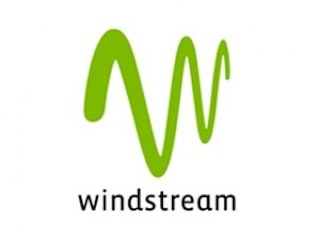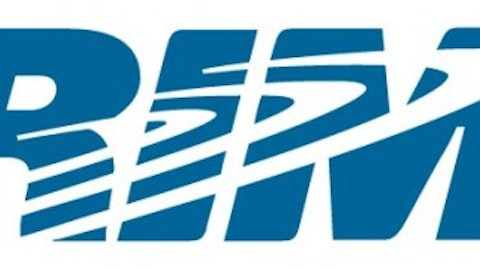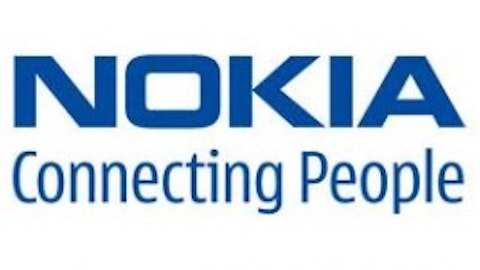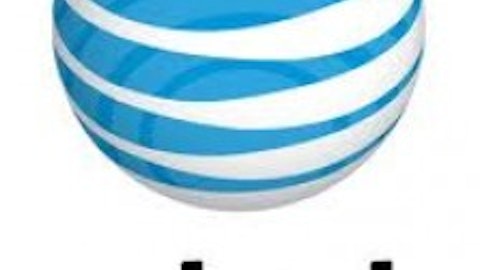
Don’t Get Me Wrong
I really want to like Windstream Corporation (NASDAQ:WIN). My portfolio is weighted toward dividend paying stocks, and I love high yields. Windstream Corporation (NASDAQ:WIN) also talks a good game. The company’s CEO Jeff Gardner said in their earnings release, “Windstream continues to produce substantial free cash flow that enables us to invest in our business, and reduce our debt, while continuing to pay our $1 annual dividend.” What’s even better is, he recognizes the company’s heavy debt load by saying, “we plan on directing excess free cash flow – after our dividend – to debt repayment.”
There are some positives to Windstream Corporation (NASDAQ:WIN) and their recent results. The company saw sales to enterprise customers increase 6% on a year-over-year basis. Windstream Corporation (NASDAQ:WIN) also saw a 1% increase in high-speed Internet customers, which was on par with competitor CenturyLink, Inc. (NYSE:CTL) and their just less than 1% increase in broadband customers. This increase was better than the nearly 2% decrease in data and Internet revenue that Frontier Communications Corp (NASDAQ:FTR) reported recently. However, none of these local companies could compete with the 12.6% increase Verizon Communications Inc. (NYSE:VZ) reported in FiOS Internet customers.
Yeah, It’s That Bad
Here’s the problem, Windstream’s financials are some of the worst in the industry. Let’s face it, this company’s main attraction is their 11.79% yield. Whether this yield is sustainable should be of utmost importance. Based on recent results, this just isn’t the case.
One big issue Windstream is facing is their huge debt load. As of the current quarter, Windstream’s debt-to-equity ratio is 7.35. By comparison, Frontier’s debt-to-equity ratio is 2.03. If you look at the debt-to-equity ratios of CenturyLink and Verizon, you get 0.97 and 1.23, respectively.
Think about those numbers for a minute. Windstream is carrying 650% more relative debt than CenturyLink, and more than 260% more relative debt than Frontier. Considering both Frontier and CenturyLink have been forced to cut their dividends to maintain their investment rating, what does this tell you about Windstream’s future?
The challenge that this debt creates is the company has to perform well just to cover interest payments. In the current quarter, Windstream’s interest payments used 93.01% of their operating income. The only competitor with a percentage near Windstream was Frontier at 75.89%. CenturyLink and Verizon’s percentages of 44.29% and 11.53% look tiny by comparison. Windstream literally has just less than $0.07 from every dollar of operating income to use for capital expenditures, dividends, and principal repayment. With a margin of error this small, you can see why I’m skeptical when the company says they are going to maintain their dividend and repay debt.
Worst of All
Probably the biggest challenge in believing in Windstream’s dividend is the company’s cash flow situation. The company touted that their full year free cash flow was $768 million, and with $588 million in dividends; this creates a 77% payout ratio. The problem is, free cash flow can include adjustments to accounts receivables, payables, inventory, and more. Since these are accounting adjustments and not real cash inflows, I like to use what I call adjusted free cash flow. The formula calculates real cash inflow and outflow. To get adjusted free cash flow, you take net income, add depreciation and amortization, and subtract capital expenditures. Since this number eliminates a lot of the non-cash adjustments, it gives a truer picture of what a company can afford.
Using adjusted free cash flow, Windstream’s free cash flow payout ratio for the year was actually 161.36%. If you look at the current quarter, the payout ratio is even worse at 256.97% using this same measure. By comparison, Verizon’s adjusted free cash flow payout ratio was 69.33%, CenturyLink’s ratio was 67.16%, and Frontier’s ratio was 59.46%. In plain English, this payout is in serious trouble.
When you add it all up, the future of Windstream’s dividend is very tentative. The company said in 2013 they expect to lower capital expenditures to around $800 million to $850 million. However, even using these projections, the company’s adjusted payout ratio would be 95%. This is simply too high for comfort. Frontier’s yield of 9.78% looks much better, because their interest expense to operating income, debt-to-equity ratio, and payout ratio are all lower than Windstream.
However, if investors want real safety, they might consider either CenturyLink or Verizon. Both companies pay competitive (although not outrageous) yields of 6.24% and 4.52%. These two companies have much more reasonable debt levels, and their payout ratios are sustainable as well. I’m afraid for Windstream investors. Their dividend is anything but sustainable at the current time.
The article These 3 Numbers Keep Me from Buying originally appeared on Fool.com and is written by Chad Henage.
Copyright © 1995 – 2013 The Motley Fool, LLC. All rights reserved. The Motley Fool has a disclosure policy.





